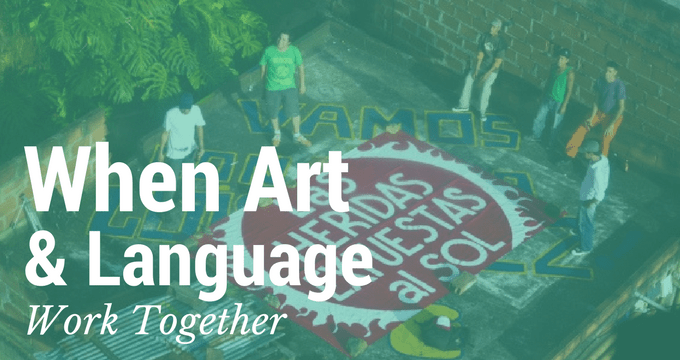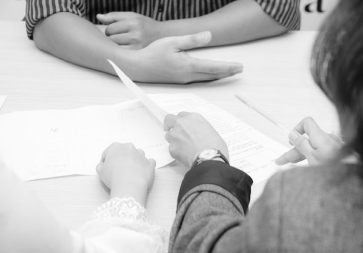
The worlds of art and language have incredibly close cultural ties; both have been connecting societies for centuries. Without the use of translating the history behind works of art, as well as the history of the artists themselves, it would be impossible for people across the world to truly understand and enjoy the pieces being presented. This goes for any type of medium.
One curator that has fully mastered this concept of bilingual and multilingual content is featured as part of The Getty’s Pacific Standard Time: LA/LA initiative in Southern California. We had the opportunity to speak with Bill Kelley Jr., Lead Researcher & Curator of Talking to Action: Art, Pedagogy, and Activism in the Americas, a remarkable, in-depth exhibition and art publication that explores “contemporary, community-based art practices in the Americas.”
Here are some of the highlights from our conversation about Talking to Action and the relationship between language translation and art.
LA/LA at Otis College of Art & Design
Talking to Action investigates contemporary, community-based social art practices in the Americas. Featuring drawings, archival materials, sculpture, installation, video, and film, it blurs the lines between object-making, political and environmental activism, community organizing, and performance art. Representing various communities throughout the hemisphere, Talking to Action includes contemporary artists and collectives from Argentina, Brazil, Chile, Colombia, Ecuador, Mexico, Peru, and the United States.
Behind the Exhibition: Talking to Action Publication
The bilingual publication entitled “Talking to Action: Art, Pedagogy, and Activism in the Americas” is co-published by the School of the Art Institute of Chicago and distributed by University of Chicago Press.
The publication is a first of its kind in bringing together scholars from across the hemisphere to discuss community-based art practices, just at the moment when this field is beginning to dominate the art discourses in the United States. This is an important moment for scholars in our field, to frame these art practices and understand them in ways that are not simply limited by our own insular national or cultural borders. Art and culture don’t work that way, so having a more intercultural dialogue is fundamentally important.
“Going Global” with Translation and Art Dialogue
Translation is such an important, and yet under-appreciated part of the academic field in the United States. That is due in part to the fact that many U.S. scholars, like much of the general population, feel no urgency to learn or study other languages. Accordingly, translation becomes a much more urgent matter in non-English speaking contexts if they want to reach audiences outside their own national borders.
But we are entering a more globalized moment, and monolingual English speaking scholars are beginning to see that scholarship in other languages and contexts is increasingly important to their own work and thus, translations will become a more important consideration going forward. That is a welcome change.
Translating the Talking to Action Publication
I’ve had a long standing relationship with Paul Elwood and the rest of the great people at Language Department. I’ve asked them to do translations for all my projects because of their solid work — they are really flexible with meeting deadlines and the inevitable shifts and changes that come about when you work in the cultural field, particularly in other parts of the world.
You can learn more about the exhibition on the Otis College website.
What can translation do for the reach of your publication, website, or overall organization? Get in touch with us and share your business needs for a free quote.




